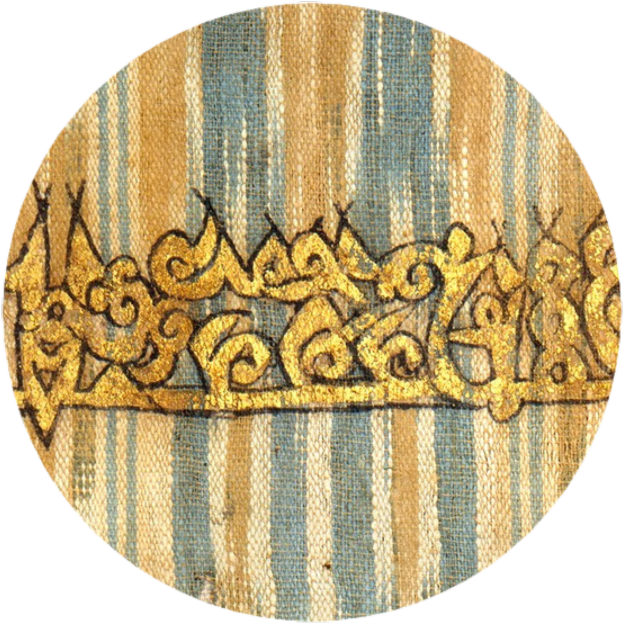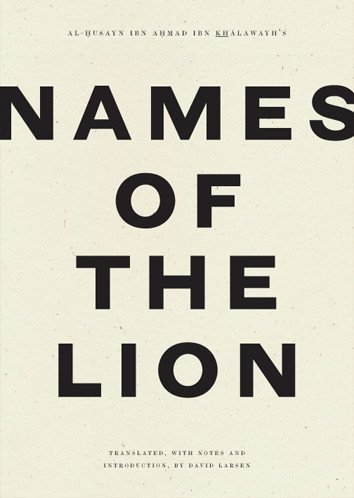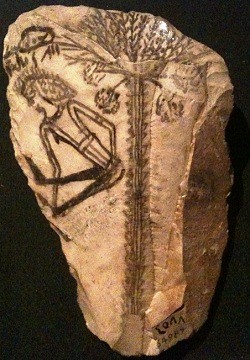THE PARTISAN OF THE ROOSTER: The rooster is characterized by boldness and resilience at the encounter—qualities of people who can withstand the blows of whips and staves, and are steadfast in the clash of arms. He is a wily strategist, adept at feints and dodges, as are also necessary in war. His skills are honed, and once he decides how best to plant his ṣīṣiya [which is his spur] in the eye of another rooster, his aim is inerrant, and he goes in for the kill.
People wonder at the slaughterer, whose art is proverbial for inerrant throat-cutting, and at the meat-cutter's skill at separating joints. This is where the proverb comes from: "He goes right to the stabbing-place, and does not miss the joint," said in praise and dispraise [of blunt-spoken people]. The rooster excels at this, and is quick to pounce, lifting himself high in the air with his sharp and uniquely-placed weapon.
Only the rooster is so outfitted. The horn of the oryx bull is called ṣīṣiya after the rooster's weapon. And the defensive fortifications at Medina are called ṣayāṣī [which is the word's plural form]. God says, be He Exalted and Magnified, said: "He brought their backers from the People of the Book down from their ṣayāṣī..." [This is because defensive munitions can be considered weapons, and vice versa:] An armed man is called in Arabic dāri‘ "armored" and dhū 'l-junna "covered." The horn that the bull gores with is much bigger than the rooster's ṣīṣiya, which is likewise a defensive weapon. So when men made towers to be their strongholds, forts and coverts, in the way of shields and helmets and coats of mail, they called them ṣayāṣī.
They gave the name ṣīṣiya to the weaver's barb because of its shape, despite its greater length. Weavers use it to even out their warp and weft, and defend against the misalignment of their weaving. It fits in the hand like a weapon, and could be used to strike a person if one wished. Durayd ibn al-Simma said (meter: ṭawīl):
You see him touched by hostile spears
the way a stretched weaving is struck by ṣayāṣī.
The Arabs used to call the scorpion's barb a shawka. The rooster's spur can also be called shawka, by analogy to the shawk of the date palm [which are its "thorns"]. A person afflicted with erysipelas is said to be "struck by al-shawka," because the condition is commonly brought on when a date palm thorn breaks the person's skin. Al-Qutami called the barb of the scorpion its "thorn" (meter: ṭawīl):
He travels on through frost of night, until his extremities
[ache and tingle] as if attacked by scorpions' thorns.
A thorn is slim at the tip and wide at the base. For this reason, a mare [if it is small in the chest and big in the rump] may be called sullā’, which is another word for "thorn," heard in the description of ‘Alqama ibn ‘Abada (meter: basīṭ):
A thorn of a horse, like an old Nahdite's staff: [the frog of her hoof]
adheres there, tough as the gnawed pit of a date of Qurran.
Erroneously, some people call the the scorpion's barb a ḥuma. Ḥuma is in fact the creature's venom, and that of wasps and hornets with their stingers, and the fangs of vipers and other venomous snakes. The word is not used of botanical poisons. Some creatures carry venom in their proboscis, like the mosquito and the biting fly, and others, including spotted geckoes and certain spiders, transmit it in their bite. The bite of the tick can be grievous, and the tarantula's can kill. Bedbugs and scorpionflies aren't so deadly, and in our considered view not all these animals can be said to carry ḥuma.
Two who died from poisonous bites are Safwan Abu Jusham al-Thaqafi and Da’ud al-Qarrad, and ahead will come a chapter on this subject, if God wills, be He Exalted.
A man or boy who, from a surfeit of lust, can't stop playing with his member unless actively or passively engaged in coitus is a ṣīṣiya. Even a eunuch may be so called. "Nothing but a ṣīṣiya," people say of a man addicted to sodomy—an expression that evokes the excitability of the rooster and the hardness of his spur.
From The Book of Animals of al-Jahiz





